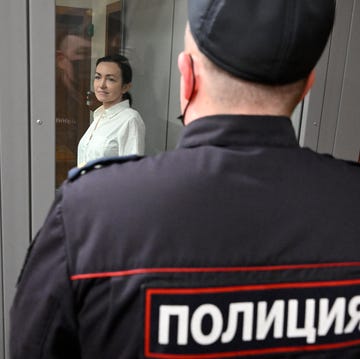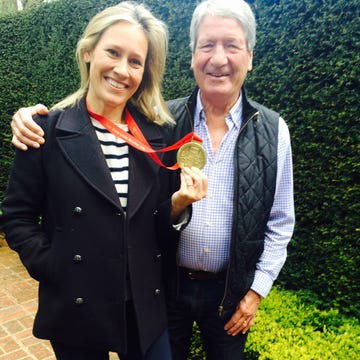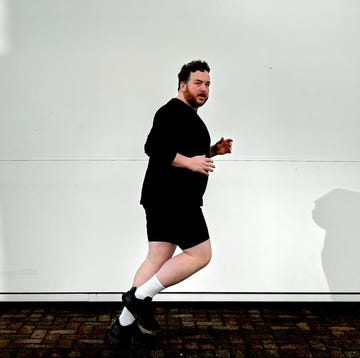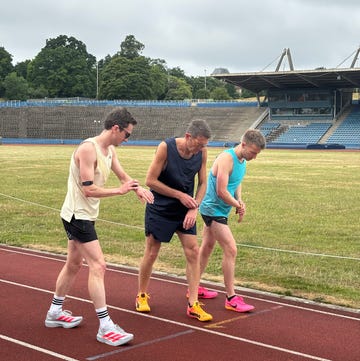In 2023, Rebecca Reid was flying through her championship race, on track to break her 87-minute half-marathon personal best – suddenly, her whole body began to feel like it was on fire.
She sat down and everything became a blur. Regaining consciousness in an ambulance, she overheard paramedics saying her heart rate was over 280 bpm. Doctors warned her she might never run again.
Just two years later, Reid broke the world record for the fastest female marathon with a subcutaneous implantable cardiac defibrillator (S-ICD) at the 2025 London Marathon.
What everyone's reading
What Reid had experienced in that race in 2023 was a life-threatening idiopathic ventricular tachycardia (VT) episode. This is where the heart’s electrical impulses incorrectly start from its bottom chambers, causing it to race dangerously.
After the first incident, she spent a week in the hospital. Despite exhaustive testing – including ECGs, CT scans, genetic testing, and exercise stress tests – doctors could not find a clear cause. The incident was considered a ‘one-off’ and Reid was in the clear to run again.
But, while out on a road speed session in November 2023, she began to feel the same sensation again.
‘That was worse,’ she says, ‘because I knew what to expect.’
Luckily, she was with a training partner who took her to the hospital again. This time though, unable to shock her heart out of its dangerous rhythm, they had to restart her heart using a defibrillator and compressions. After this second VT episode, her life changed completely.
Running had given Reid purpose after she had graduated from university in 2016, and she quickly fell in love with the sport. By 2023, she was a competitive 30-year-old runner, running near championship times and clocking 60-mile weeks while training for the Boston Marathon. With no family history of heart problems and no warning signs, her running career had unexpectedly been tipped on its head.
‘I think back to that doctor telling me you're never going to run again, and forgive the choice of words, I was heartbroken. I was devastated because it's like having part of your personality ripped away,’ says Reid.
To prevent further episodes, Reid had an operation called a ventricular tachycardia ablation: a medical procedure that uses extreme heat or cold to create tiny scars in the heart tissue. The scars block abnormal electrical signals, stopping those dangerous rhythms from happening again. She was prescribed beta blockers, which effectively cap her heart rate at 170 bpm. And after much medical debate, she had a defibrillator fitted.
The device, implanted into her chest, should shock the heart back into a normal rhythm if she faces another episode – but she explains there’s no guarantee it will work.
In 2024, Reid was finally allowed to return to running again, but her training now looked very different: her heart rate was not allowed to go beyond zone two, between 130 bpm and 140 bpm.
It was a huge change, she explains. ‘I’ve always been a “lying on the side of the track, absolutely blowing during the session” kind of runner, that’s what I love.’
Learning to train with limits
Despite the training challenges, Reid was inspired to attempt the world record when she saw coverage of a man who had set the fastest marathon with a pacemaker at the 2024 Manchester Marathon.
She discovered there was no world record for the fastest marathon with a fitted defibrillator. So, as part of her comeback race, she decided to attempt it at the 2025 London Marathon – an event which fell almost exactly two years to the date of her first incident.
She was one of the roughly 2% of people to receive a place in the ballot.
‘It was absolutely unbelievable. I just think that was fate,’ she says.
This time around, Reid’s marathon training took a very different shape: long, slow endurance runs made up 80% of her 40-mile weeks.
‘The only screen I had on my watch was my heart rate, because I felt nothing else was important,’ she adds.
In February 2025, just two months before the race, Reid found out another runner had set the world record in four hours. To win the record, she knew she had run a sub-4:00 marathon.
The uncomfortable heat of this year’s London Marathon did not make the challenge any easier and, at mile 18, Reid was forced to slow down as she noticed her heart rate creeping up.
She fought with her heart rate for the final 10km but crossed the finish line in 3:37:54, smashing the world record for the fastest female marathon with a subcutaneous implantable cardiac defibrillator (S-ICD) by 23 minutes.
Beyond the world record
Reid’s marathon raised money for Cardiac Risk in the Young, which she will continue to fundraise for over the year. She first noticed the charity at the cheer points of the 2024 London Marathon while spectating.
Cardiac Risk in the Young works to reduce the frequency of sudden young cardiac deaths. It runs initiatives such as offering free cardiograms at grassroots sporting events, like local football games, to detect underlying issues early.
Reid feels the charity ‘aligns perfectly’ with her own experience, and believes the work they do could help others avoid facing what she’s been through.
Despite wondering whether a similar screening could have prevented her incident, the life-changing episodes have made Reid feel immensely grateful for being able to run.
‘Every run I go on, I still think I can’t believe I can do this,’ she says.
Reid still hopes to get back to running competitive times, but acknowledges it will take a long time to get faster when training at a lower heart rate.
Reid's broader message is one of hope for people who are injured, as Reid feels her journey demonstrates there is always a way back.
‘My main thing was to prove to myself, as much as other people, that there is always a light at the end of the tunnel,’ she finishes.















